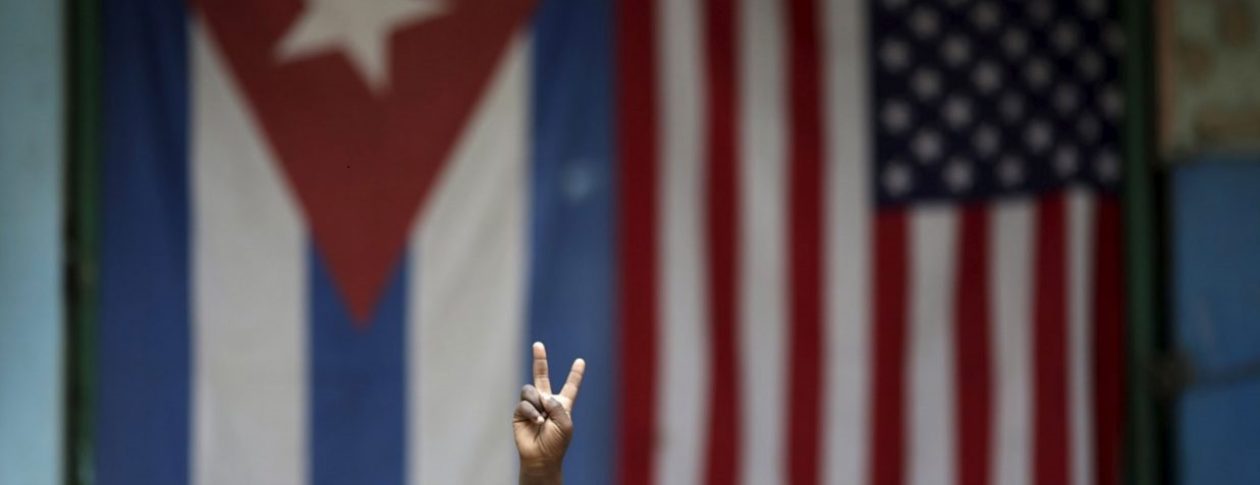Life defeats death
The day after attending the inauguration of Alberto Fernandez, the Cuban President visited the former Navy Petty-Officers School, the terrible ESMA, one of the Argentine dictatorship’s largest secret detention, torture, and extermination centers
Leticia Martínezdecember 12, 2019 15:12:55
Cuban President Miguel Díaz-Canel visited the former ESMA, one of the most painful symbols of the dictatorship that Argentina endured between 1976 and 1983. Photo: Estudios Revolución
Buenos Aires, Argentina – More than 5,000 detainees, barely 200 survivors, in 2,818 days of dictatorship, are the macabre numbers that mark the “record” of terror behind the walls of the former Navy Petty-Officers School, the fearsome ESMA, one of the dictatorship’s largest secret centers of detention, torture and extermination.
Moving through the hustle and bustle of the city, still excited by the inauguration of President Alberto Fernandez and Vice President Cristina Fernandez, several men and women, tremendously happy for the their country’s new dawn, returned to the concentration camp where they were detained and tortured in their youth.
They were Ana, Néstor, Silvia, Mercedes, Ricardo, Graciela, Silvia, Alfredo, and Vera, the mother, 92 years of age, who lost her daughter Franca at 18, in an ESMA cell or perhaps in the flights of death. Little is known. They returned to the place that tore them apart, but this time with a different connotation – to accompany the President of Cuba, Miguel Díaz-Canel Bermúdez, through every corner of the barbarism.
The President said he felt it was his duty to make the visit, when he met them in one of the museum’s offices, with his companion, Lis Cuesta, waiting for him to arrive after a meeting with President Fernandez.
“Your agreeing to join me is beyond all my expectations. You have all of Cuba’s recognition and support; you are part of the energy that helps us every day to resist and triumph.”
“It will be a difficult journey,” warned Alejandra Naftal, director of the ESMA Memory Museum, before the tour began, “But this place is a victory for Argentines, the result of more than 40 years of struggle. It is not about death, but about life, respect, even for the indifferent who still deny everything that happened.
“A crime against humanity was committed here,” she stated, before President Díaz-Canel and his delegation began their walk through one of the most painful symbols of the dictatorship that Argentina endured between 1976 and 1983.
In what was the ESMA Officers Casino, the survivors recalled, for the President, details of the hell where they were taken after being abducted, blind-folded with thick black cloth, hand-cuffed, lying practically all the time in a space measuring 70 centimeters by two meters, with their heads always toward the corridor, to be seen by the guards, suffering suffocating temperatures, relieving themselves whenever their captors decided.
With his voice choking, the Cuban President told his hosts, victims of the terror, after two hours at the ESMA, Photo: Estudios Revolución
Silvia showed him the miserable place where she gave birth to her daughter. They were together for only a week, before the baby was “fortunately” given to her grandmother. At her side, to relive the story, was Mercedes, the young woman who helped her give birth amidst the terror. Today, a question is written on one of the room’s walls: How is it possible that children were born here? Silvia’s little girl could answer.
The Cuban President learned of the atrocities in the voices of the victims; and of the pentothal given the “condemned” to numb them before they were thrown alive into the Plata River; of the so-called road of happiness that led to the torture room; of the electric prod used to kill; and of the screams they attempted to drown out with blazing music; of the women raped; of forced labor; of mock executions… all of this while daily life continued for authorities at the school, who years later would say they did not “notice” what was happening on the premises. Really?
The tour ended in the hall where information on all the detainees was processed. Today, more than four decades later, the names of the murderers are projected on its walls, many of them labeled “convicted.”
After two hours at the ESMA, with his voice choking, the Cuban President told his hosts, the victims of this terror, “You are light and dawn. There is enormous testimony here to what cruelty is, of what murder is, of what abuse is, of what the violation of human rights is; of what is harmful, what is perverse, of what is dreadful about military dictatorships… You cannot imagine what you have given us in terms of feelings, in revolutionary convictions,” he said.
“This is something we will remember all our lives,” the President stated, and referring to the missing youth as “the generation of my age,” he added, “We are not going to forget them. We came to this inauguration – and we explained this to President Alberto Fernandez – to tell you that you have the support of Cuba, that you have the respect of Cuba, that you have the friendship and solidarity of Cuba. Together we are going to walk the path of victory for Latin America.”
“At the solidarity event, I said, as in Fito’s song, to whoever says that all is lost, Cuba comes to give our heart.”
Thus, taking on greater meaning are the words of Graciela, one of the survivors who, before the tour, said: “When we were imprisoned, Cuba was our beacon. To be talking with you today is proof that we defeated them.”


